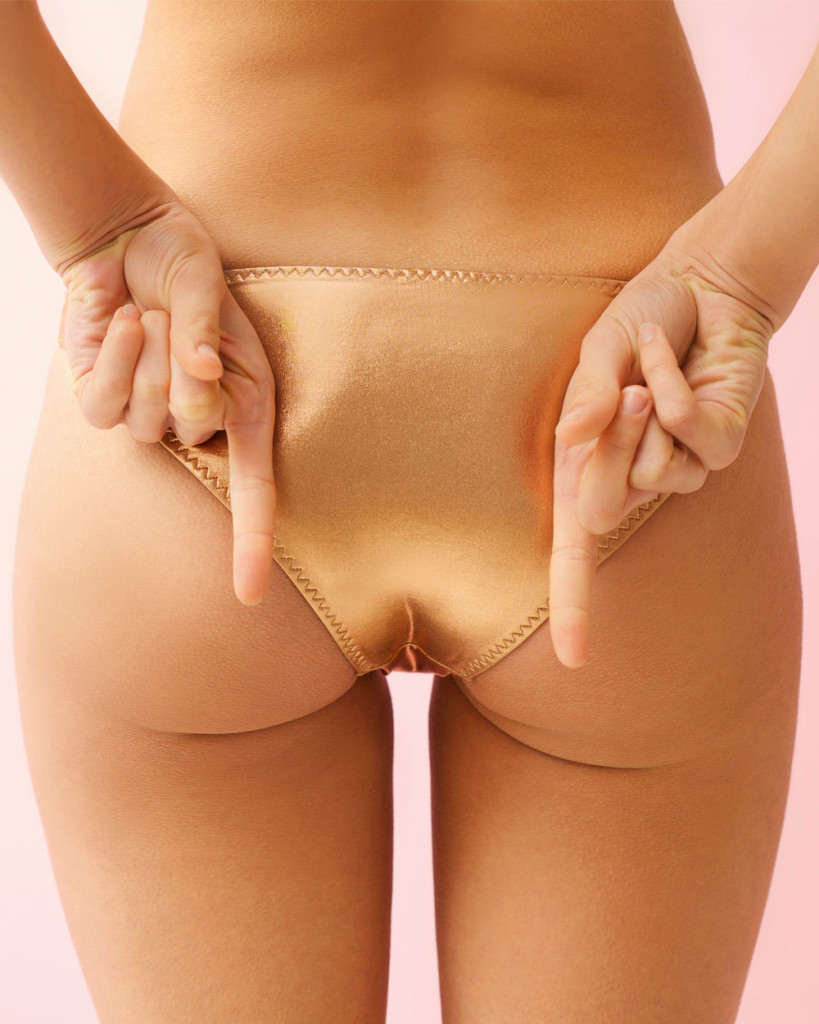Cellulite isn’t caused by an underlying medical issue. It can appear in healthy people of all backgrounds.
The illusions surrounding cellulite are just as creative as the nicknames that we’ve given it (hail damage, cottage cheese – yep, you get the gist). So, we’ve turned to the experts to set the fat fallacies aside and give us the lowdown.
Myth 1
Cellulite is run-of-the-mill excess fat
Cellulite is technically fat, but it’s actually a lot more complex than that. There are two main types of fat in our body: visceral, which surrounds our organs, and subcutaneous, the layer that sits directly underneath the skin. The dimply appearance of cellulite is caused by the latter. “When our tissues are weakened or damaged, subcutaneous fat cells penetrate the dermis and this creates the ‘dimple’ effect you see on the outer layer of skin,” explains Cedar + Stone founder and natural therapist Kate Sampson.
The herniation of these types of cells usually takes place after puberty, and as the cells move further in, hard deposits form around them. Favourite crop-up spots for cellulite are the hips, bum and thighs, and while it can affect everyone, women are genetically and hormonally predisposed to it. Almost 90 per cent of us experience it post-puberty or -babies. There you go, cellulite is no basic betch. And pretty much everyone has it.
Myth 2
Tone up and you’ll lose the lumps
While a healthy diet and regular exercise can help to lessen cellulite’s appearance, hormones and genetics are the main controllers of where it appears, if at all. “Cellulite isn’t caused by any underlying medical issue, nor is it specifically related to being overweight or obese,” confirms nutritionist Melinda Overall. It can even appear in extremely healthy people of all backgrounds who have an ideal body weight and eat a well-balanced diet.”
That said, employing basic healthy lifestyle habits is still crucial. Cellulite can be accelerated by weight gain, pregnancy and a bunch of lifestyle factors including high stress levels, poor nutrition, smoking, excessive alcohol consumption and lack of physical activity. Exercise and a good daily diet helps maintain a healthy body weight, which then reduces the likelihood of fat deposits and enhances muscle development. Eating well also delivers the important nutrients, like omega-3 fatty acids, to support the skin’s elasticity and improves circulation by bringing oxygen to the cells and reducing fluid build-up.
Myth 3
Lotions can smooth it out completely
Unfortunately, no cream is capable of getting rid of cellulite for good, no matter how premium it is. However, what lotions definitely can do is improve the overall tone and texture of the skin, and take a little definition out of the dimples. Teamed with prep work (like a vigorous massage and dry-skin brushing), the skin can then better absorb the firming ingredients, just like a great exfoliating agent and an anti-wrinkle cream can work wonders for fine lines. “Massage is great for treating cellulite as it increases the blood and lymph flow to the dermis where cellulite occurs,” says Sanctuary Spa skin expert and celebrity facialist Nichola Joss. “It helps to remove the toxins that build up as the fat cells increase in size.”
Using either a body massager, your hands or an exfoliating sea salt scrub, massage the skin in circular motions towards the heart. Dry brushing works
in a very similar way, refining the texture of the skin and detoxifying the system. Starting from the outermost parts of the body, Joss recommends making quick, sweeping motions in a clockwise pattern, working towards your core. Then, just massage in your body lotion using the same firm technique to keep the wake-up call and bloodflow going!
Myth 4
Cellulite is totally unchangeable
Don’t stress, it’s not all bad news. While there’s no permanent cure, there are ways to improve the appearance of all
the annoying lumps and bumps and reduce it for the long run. Presenting options you can do at home…

The lotion ingredients to look out for:
Peptides: They mimic and stimulate collagen, creating a firming effect.
Glaucine: Research has shown that glaucine (which can be found in yellow poppies), helps to activate the fat-burning molecules and prevents the storage of new fats.
Caffeine: When applied topically, caffeine temporarily tightens the skin.
Essential fatty acids and vitamins A, B, C and E: In addition to eating lots of these anti-ageing, skin-strengthening nutrients, it’s vital to wear them too. About 60 per cent of what we apply to our skin is absorbed into the bloodstream.
In the kitchen…
Food guru Melinda Overall shares her best tips for treating cellulite.
- Tackle fluid retention by reducing your salt intake.
- Keep hydrated by drinking two litres of water a day. Herbal tea counts towards that amount.
- Get vitamin A and beta-carotene, which helps maintain epithelial and epidermal tissue, via eggs, salmon, sardines, and yellow, orange and red plant foods.
- Feel fuller for longer with lean proteins, like free-range chicken, turkey and beef. Low-GI carbs, like legumes, sourdough bread, quinoa and brown rice, help too.
- Support the production of collagen by eating a rainbow variety of fruits and vegetables.
- Stock up on these fruit faves: kiwifruit, berries, citrus fruits, apricots and tomatoes.
- Plus these veggie legends: leafy greens (like spinach, kale and broccoli), pumpkin and carrot.
- Maintain skin elasticity with mono-unsaturated fats and zinc-rich snacks, like nuts and seeds, along with their cold-pressed oil counterparts, like macadamia, walnut and flaxseed oil. Other oily treats our skin loves include olives, avocado and tahini.
At the gym…
Strong muscles give fat a sturdy surface to sit on, making it harder for lumps and bumps to spread in different directions. The best way to hit this level is through strength training. Squats, sit-ups, lunges, calf raises and hamstring curls are all the prerequisites for toned skin. Try to aim for a half-hour session, cardio or conditioning focused, at least three days a week.











